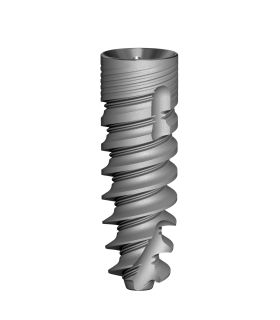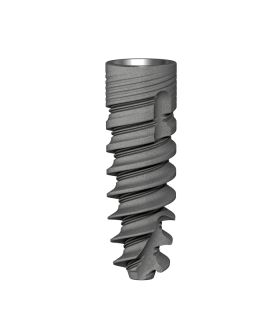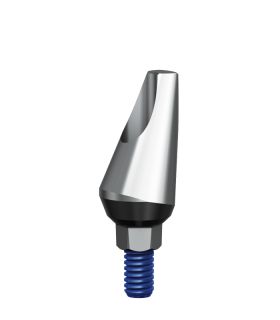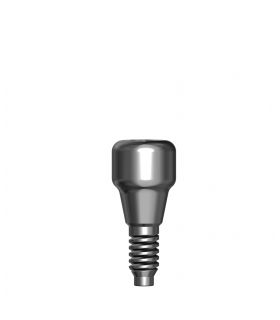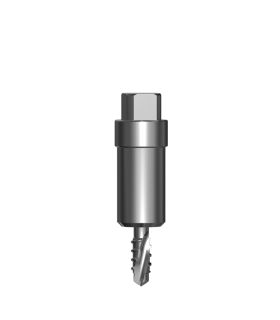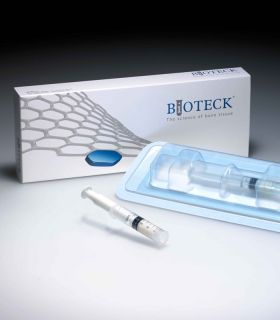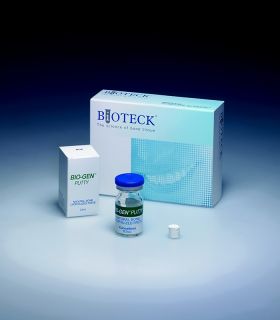1;70;1;

1;69;1;
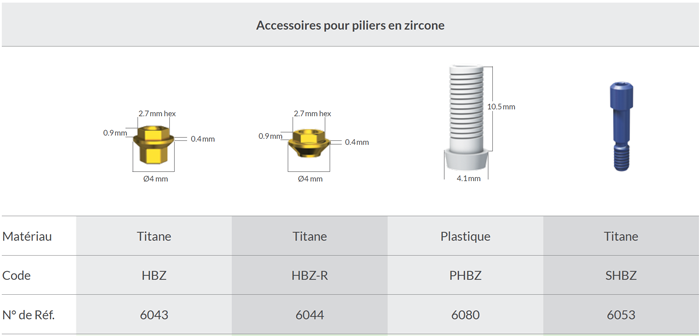
1;68;1;

1;67;1;

1;66;1;

1;65;1;
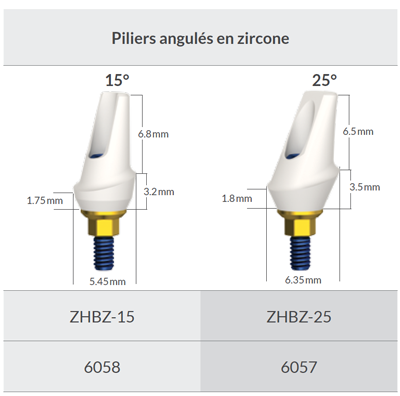
1;64;1;

1;63;1;
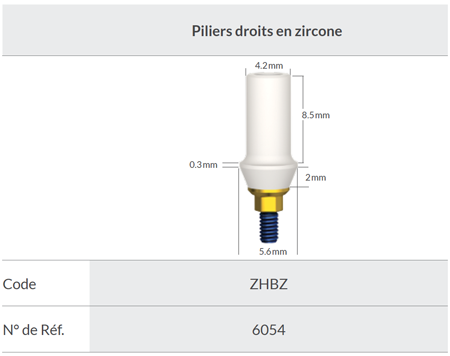
1;62;1;

1;61;1;
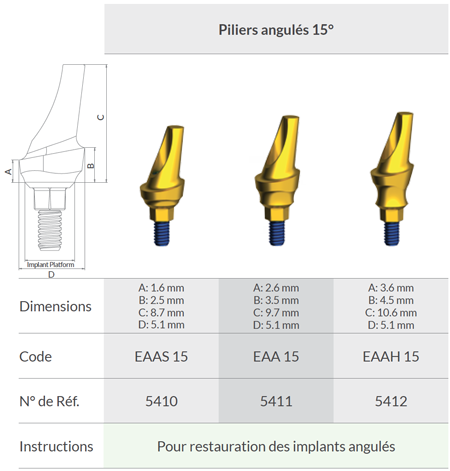
1;60;1;
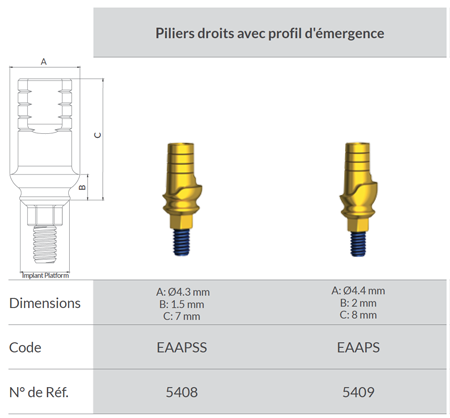
1;59;1;
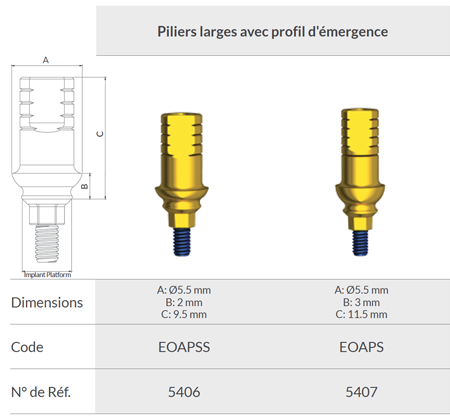
1;58;1;
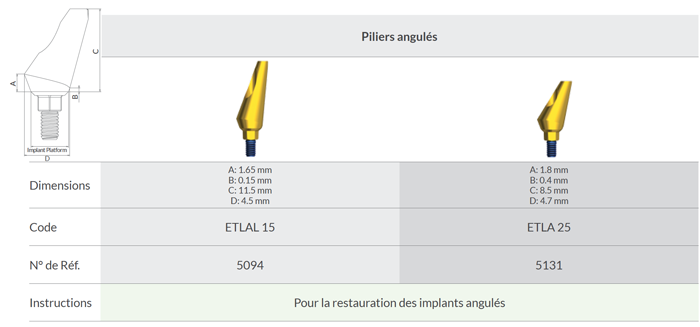
1;57;1;

1;56;1;
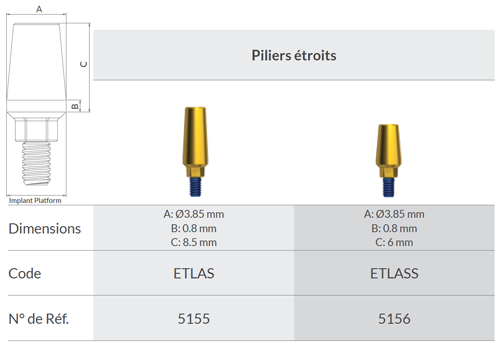
1;55;1;

1;54;1;
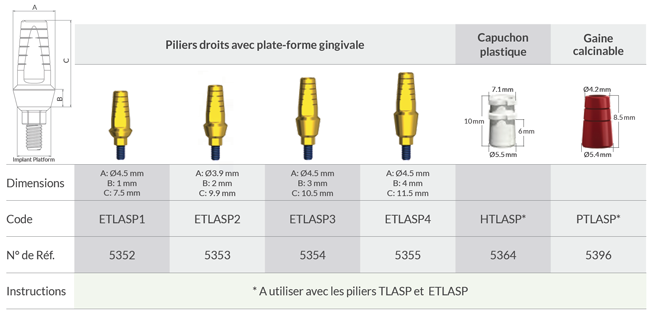
1;53;1;
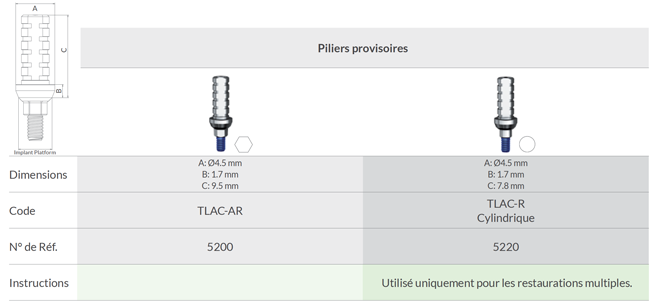
1;52;1;
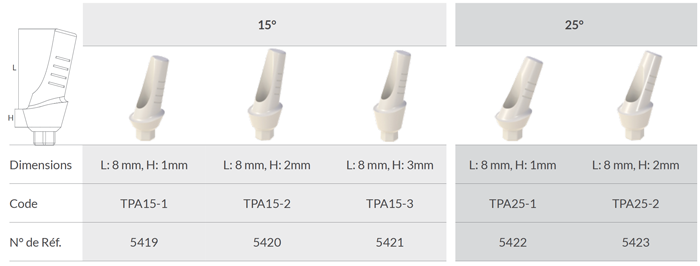
1;51;1;

1;50;1;
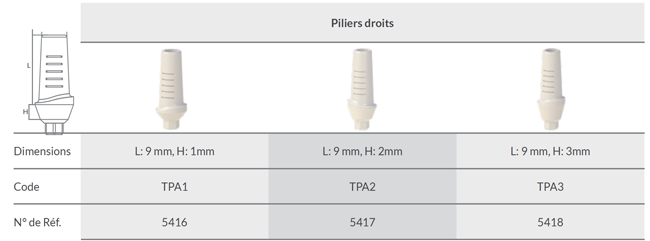
1;49;1;
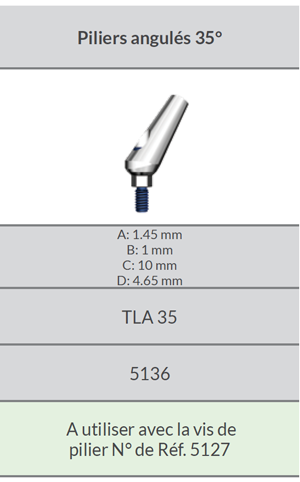
1;48;1;
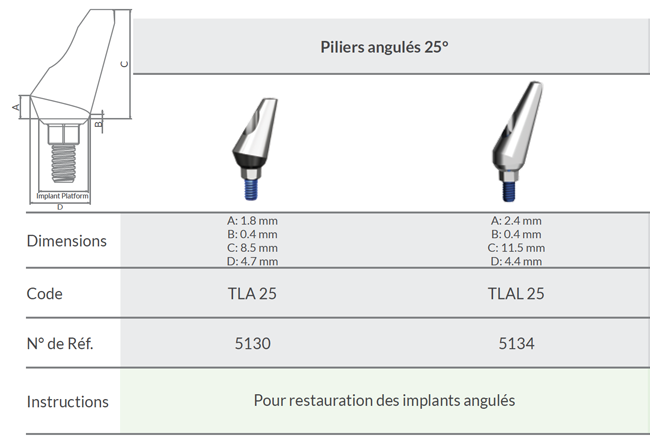
1;47;1;
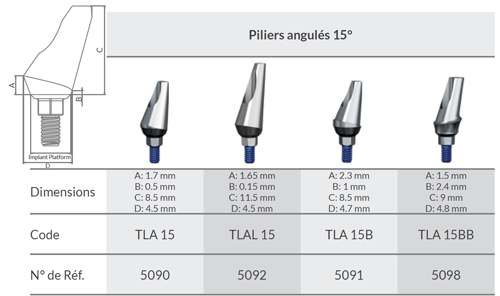
1;46;1;

1;45;1;
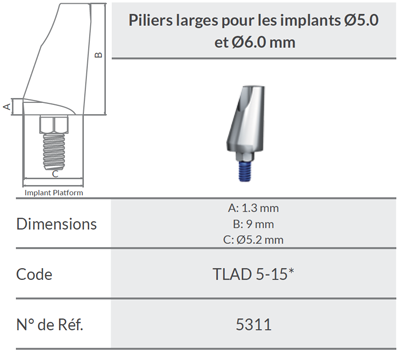
1;44;1;
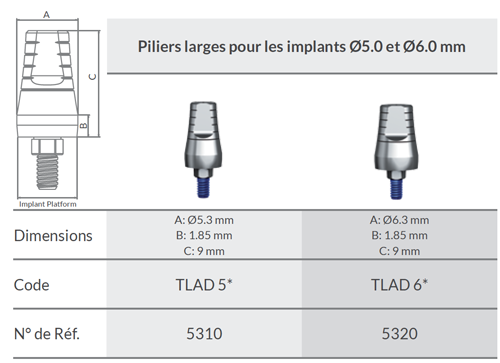
1;43;1;
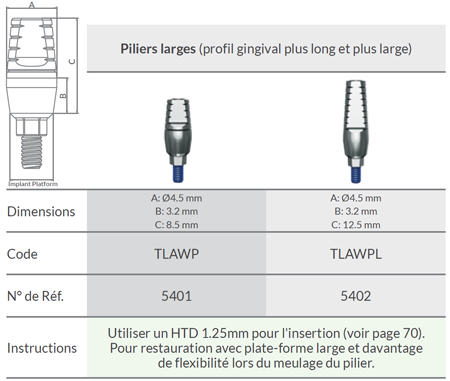
1;42;1;
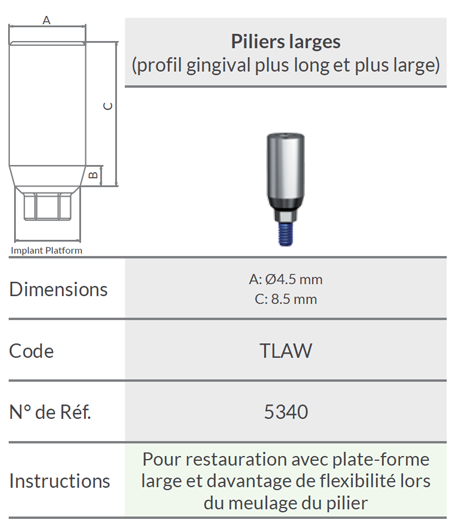
1;41;1;
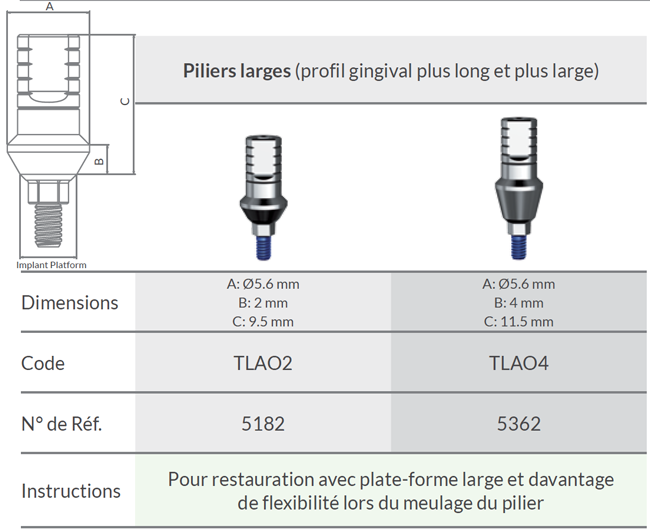
1;40;1;
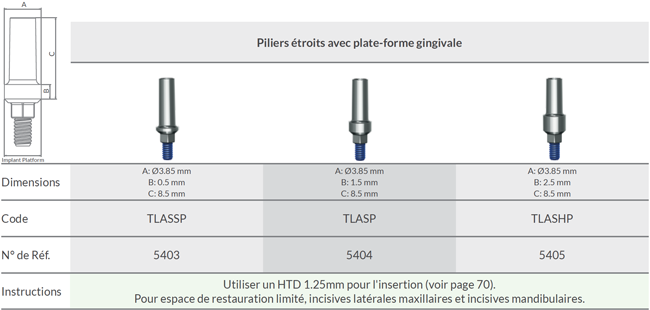
1;39;1;

1;37;1;
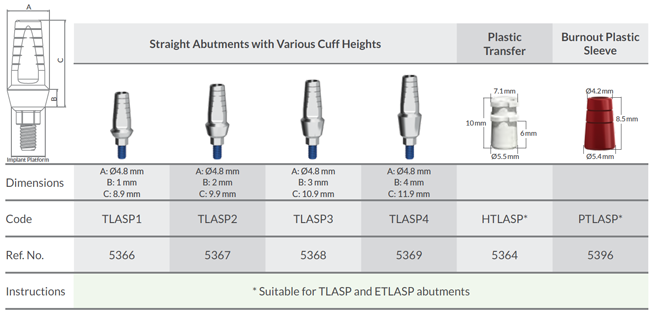
1;36;1;

1;35;1;
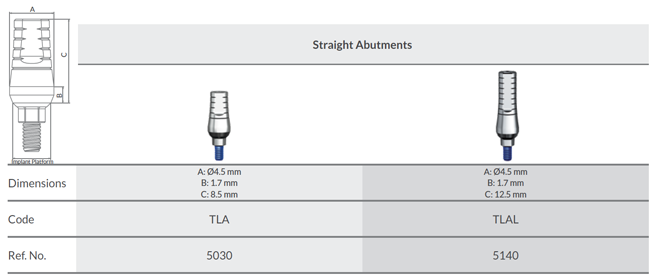
1;34;1;

1;33;1;
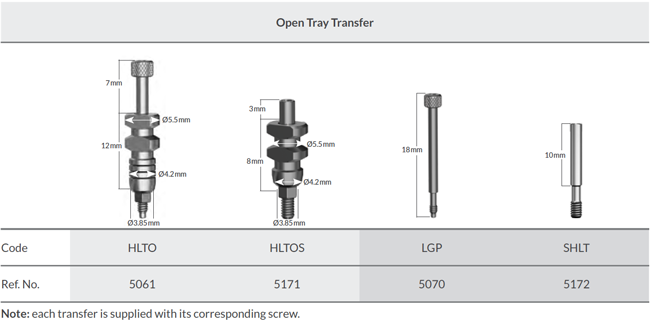
1;31;1;

1;30;1;

1;29;1;

1;28;1;

1;25;1;
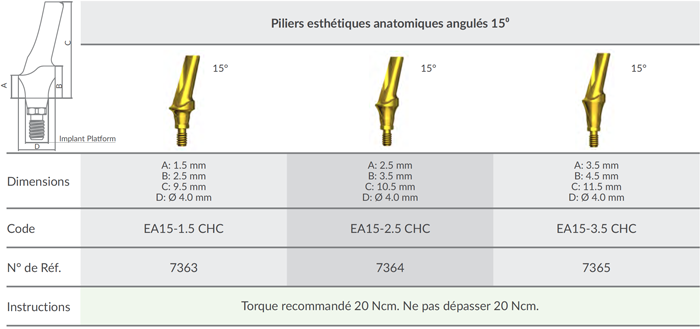
1;24;1;

1;23;1;

1;22;1;

1;20;1;

1;19;1;

1;18;1;
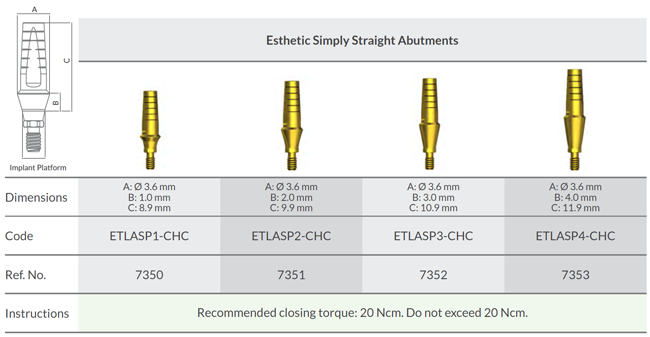
1;17;1;
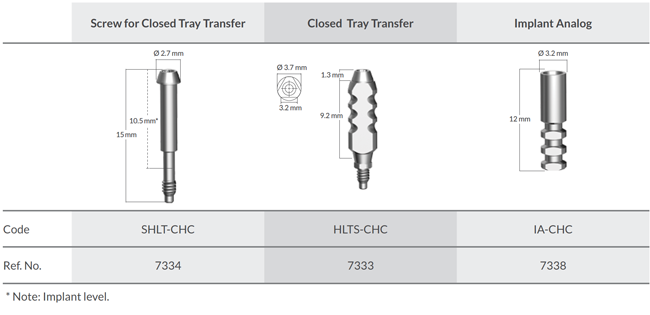
1;16;1;

1;14;1;

1;12;1;
See the list of healing abutments and order information - PDF
1;10;1;
See the list of healing abutments (connical hex connection) and order information
3;6;1;
|
Why did ABT define NeO as a system? |
NeO is defined as a system since it includes both narrow & standard connection platforms. Loyal to our core value of simplicity, the NeO system is fully compatible with ABT’s current prosthetic platforms. The NeO comes in a mountless new package, same color coding as today according to implant length and can be removed from the package by using an advanced grip driver line.
|
|
What are the top 3 clinical advantages of the implant? |
|
|
How does the NeO implant simplify complex cases? |
Its ability to achieve high primary stability in:
|
|
How does the implant coronal part design reduce the pressure on the crestal bone? How does NeO improve the esthetic result for the patient? Which features allow bone preservation? |
Stress reducing elements:
All the features combined with special new less traumatic drills, perfect adaptation between step drills and implant shape preserve the soft and hard tissues for the short and long run and hence improve the esthetic results.
|
| Which are the features that provide the primary stability? |
Primary stability raising elements:
Inter threads, micro threads – a bigger surface isthe firm engagement of the special 35 tilt angled threads
|
| Where does the NeO implant get the most of its design? (What type of bone) |
This is one of the NeO biggest clinical advantage since it is as good at bone type 4 as it is at bone type 1, nevertheless at bone type 2 and 3. The unique external shape – straight coronal part, slightly tapered body ,tapered apical part in combination with the perfect fit between the implant and its step drills makes it an all bone types player. The second important clinical advantage of the NeO is the unique delicate variable threads, designed together with the special “attack angle” threads and microthreads that makes the implant engagement very strong but with reduced pressure on the bone. |
| How do I choose the proper drilling protocol for the NeO implant? |
ABT has modified the drilling protocol into 3 bone categories, simplifying the dentist’s choice by reducing the chances of the doctor to make mistakes and improving drilling protocol accuracy. In addition, ABT has launched an advanced drills line including step drills, which enables the physician to achieve optimal osteotomy to match the implant body and gain high primary stability at the same time.
|
| Why ABT created a smart choice for the NeO (CHC for Narrow, IH for Standard and Wide)? |
Implant-abutment connection plays an important and significant role on the long term implant stability and bone preservation. Taking into consideration these crucial factors, Alpha-Bio Tec has developed a smart platform choice solution. The smart platform choice solution for NeO combines the advantages of the unique and evidence based features of IH connection along with the clinical advantages of the conical platforms. Each tailored for the implant individually, according to its intended use while maximizing safety and durability. The NeO IH platform is 45o conical edge platform (=900) and the Conical Hex Connection CHC is 11.25o conical connection platform (=220). Both platforms are manufactured with meticulous tolerances, which assure a very accurate biological seal. Alpha-Bio Tec's routine quality assurance sampling, assures a stable and consistence production output. The NeO platforms are designed to ensure the best possible biological seal and minimized bacterial leakage. Precise fit and proper design ensures accurate sealing in both IH and CHC connections without compromising on the implant's mechanical durability.
|
|
Does Alpha-Bio Tec have digital restoration parts (CAD/CAM) that fit both types of connection?
|
Yes, CAD/CAM holds both prosthetic platforms, IH and CHC. |
|
Do I need to have additional tools / instruments / products to use NeO system?
|
Yes, the NeO implant comes in a new package which does not include an implant holder. A dentist will need a grip driver which can be used to easily pick-up the implant from the package directly to the site. The dentist has a choice of preferred drivers: manual, ratchet and contra-angle.
|
|
What is unique in the apical part of the NeO implant and what are the benefits? What does it mean "centering feature"? |
The centering feature takes the implant exactly to the point of bone penetration without the need for direct visibility. It makes the procedure of finding the osteotomy a lot easier, especially when the osteotomy is hidden by a neighboring tooth or covered with blood and cannot be seen. In addition, the apical threads hold “attacking angle threads” which helps in primary engagement strongly to the bone. A combination of narrow apical part (2.9 mm) along with sharp and deep threads this design is ideal for penetration into smaller diameter drilling and therefore leading to very high primary stability.
|
1;7;1;

1;6;1;

1;5;1;

1;4;1;

1;2;1;

1;3;1;

1;1;1;

1;71;1;
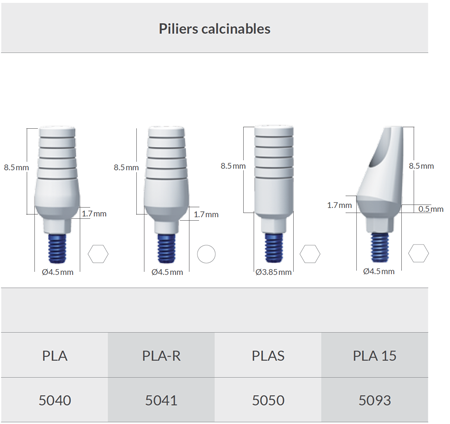
1;72;1;

1;73;1;

1;74;1;
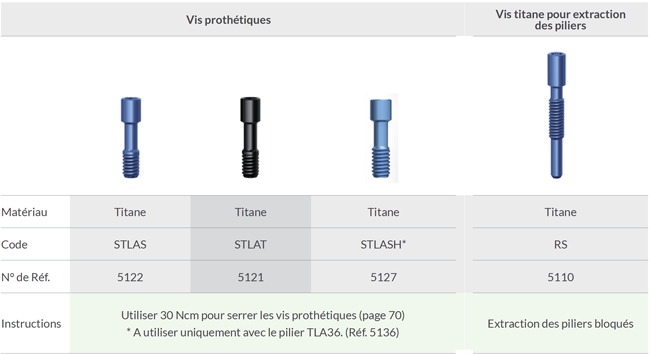
1;75;1;

1;76;1;

1;77;1;

1;78;1;

1;79;1;
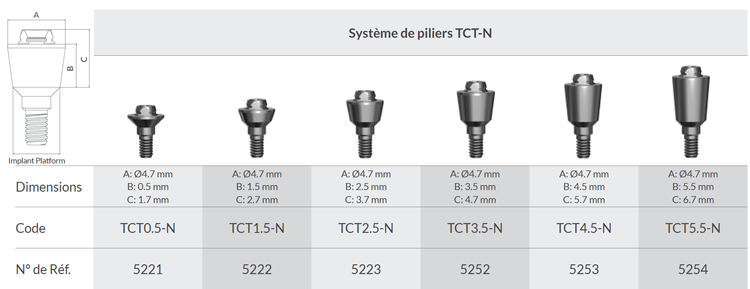
1;80;1;

1;81;1;

1;82;1;

1;90;1;
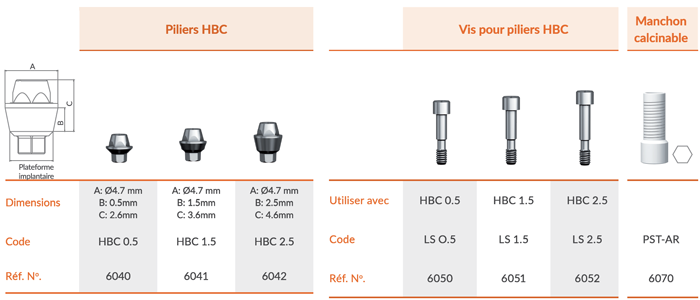
1;91;1;

1;92;1;

1;93;1;

1;94;1;

1;106;1;
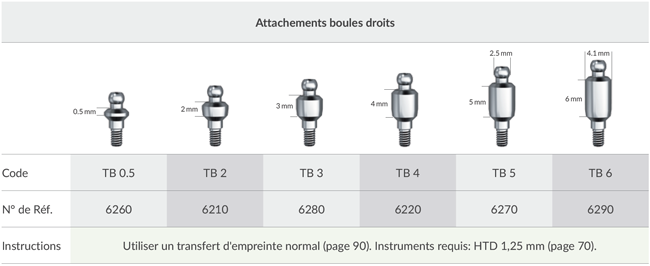
1;107;1;
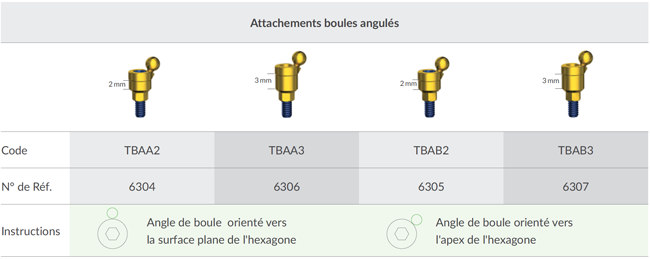
1;108;1;

1;113;1;
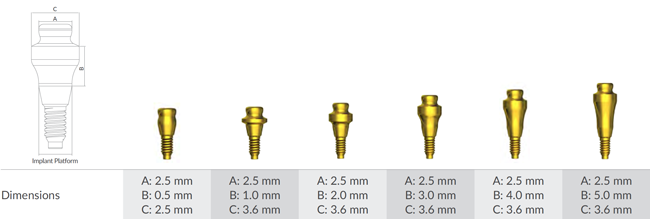
1;114;1;
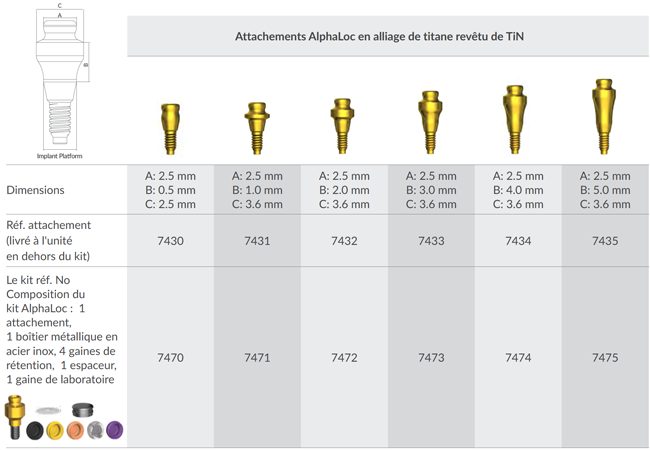
1;115;1;
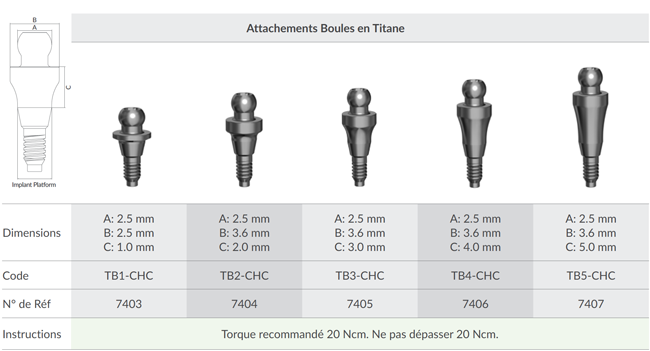
1;116;1;
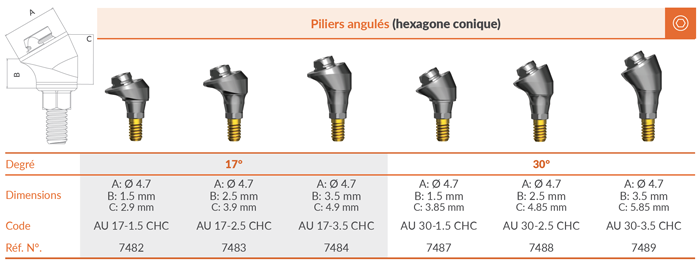
1;117;1;

1;118;1;

1;119;1;

1;120;1;

1;121;1;

1;122;1;

1;123;1;

1;124;1;

1;125;1;

1;126;1;

1;132;1;
1;133;1;
1;134;1;
1;171;1;

1;172;1;

1;173;1;

1;175;1;

2;1;1;


2;2;1;

2;3;1;



2;5;1;

2;6;1;


2;7;1;
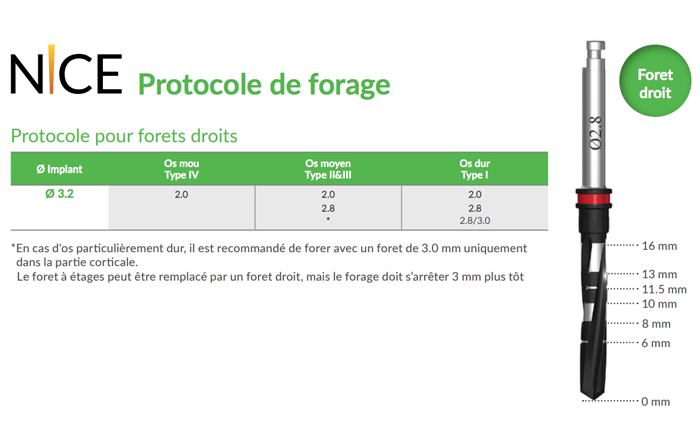
3;2;1;
|
Why did ABT define NeO as a system? |
NeO is defined as a system since it includes both narrow & standard connection platforms. Loyal to our core value of simplicity, the NeO system is fully compatible with ABT’s current prosthetic platforms. The NeO comes in a mountless new package, same color coding as today according to implant length and can be removed from the package by using an advanced grip driver line.
|
|
What are the top 3 clinical advantages of the implant? |
|
|
How does the NeO implant simplify complex cases? |
Its ability to achieve high primary stability in:
|
|
How does the implant coronal part design reduce the pressure on the crestal bone? How does NeO improve the esthetic result for the patient? Which features allow bone preservation? |
Stress reducing elements:
All the features combined with special new less traumatic drills, perfect adaptation between step drills and implant shape preserve the soft and hard tissues for the short and long run and hence improve the esthetic results.
|
| Which are the features that provide the primary stability? |
Primary stability raising elements:
Inter threads, micro threads – a bigger surface isthe firm engagement of the special 35 tilt angled threads
|
| Where does the NeO implant get the most of its design? (What type of bone) |
This is one of the NeO biggest clinical advantage since it is as good at bone type 4 as it is at bone type 1, nevertheless at bone type 2 and 3. The unique external shape – straight coronal part, slightly tapered body ,tapered apical part in combination with the perfect fit between the implant and its step drills makes it an all bone types player. The second important clinical advantage of the NeO is the unique delicate variable threads, designed together with the special “attack angle” threads and microthreads that makes the implant engagement very strong but with reduced pressure on the bone. |
| How do I choose the proper drilling protocol for the NeO implant? |
ABT has modified the drilling protocol into 3 bone categories, simplifying the dentist’s choice by reducing the chances of the doctor to make mistakes and improving drilling protocol accuracy. In addition, ABT has launched an advanced drills line including step drills, which enables the physician to achieve optimal osteotomy to match the implant body and gain high primary stability at the same time.
|
| Why ABT created a smart choice for the NeO (CHC for Narrow, IH for Standard and Wide)? |
Implant-abutment connection plays an important and significant role on the long term implant stability and bone preservation. Taking into consideration these crucial factors, Alpha-Bio Tec has developed a smart platform choice solution. The smart platform choice solution for NeO combines the advantages of the unique and evidence based features of IH connection along with the clinical advantages of the conical platforms. Each tailored for the implant individually, according to its intended use while maximizing safety and durability. The NeO IH platform is 45o conical edge platform (=900) and the Conical Hex Connection CHC is 11.25o conical connection platform (=220). Both platforms are manufactured with meticulous tolerances, which assure a very accurate biological seal. Alpha-Bio Tec's routine quality assurance sampling, assures a stable and consistence production output. The NeO platforms are designed to ensure the best possible biological seal and minimized bacterial leakage. Precise fit and proper design ensures accurate sealing in both IH and CHC connections without compromising on the implant's mechanical durability.
|
|
Does Alpha-Bio Tec have digital restoration parts (CAD/CAM) that fit both types of connection?
|
Yes, CAD/CAM holds both prosthetic platforms, IH and CHC. |
|
Do I need to have additional tools / instruments / products to use NeO system?
|
Yes, the NeO implant comes in a new package which does not include an implant holder. A dentist will need a grip driver which can be used to easily pick-up the implant from the package directly to the site. The dentist has a choice of preferred drivers: manual, ratchet and contra-angle.
|
|
What is unique in the apical part of the NeO implant and what are the benefits? What does it mean "centering feature"? |
The centering feature takes the implant exactly to the point of bone penetration without the need for direct visibility. It makes the procedure of finding the osteotomy a lot easier, especially when the osteotomy is hidden by a neighboring tooth or covered with blood and cannot be seen. In addition, the apical threads hold “attacking angle threads” which helps in primary engagement strongly to the bone. A combination of narrow apical part (2.9 mm) along with sharp and deep threads this design is ideal for penetration into smaller diameter drilling and therefore leading to very high primary stability.
|
3;1;1;
|
Why did ABT define NeO as a system? |
NeO is defined as a system since it includes both narrow & standard connection platforms. Loyal to our core value of simplicity, the NeO system is fully compatible with ABT’s current prosthetic platforms. The NeO comes in a mountless new package, same color coding as today according to implant length and can be removed from the package by using an advanced grip driver line.
|
|
What are the top 3 clinical advantages of the implant? |
|
|
How does the NeO implant simplify complex cases? |
Its ability to achieve high primary stability in:
|
|
How does the implant coronal part design reduce the pressure on the crestal bone? How does NeO improve the esthetic result for the patient? Which features allow bone preservation? |
Stress reducing elements:
All the features combined with special new less traumatic drills, perfect adaptation between step drills and implant shape preserve the soft and hard tissues for the short and long run and hence improve the esthetic results.
|
| Which are the features that provide the primary stability? |
Primary stability raising elements:
Inter threads, micro threads – a bigger surface isthe firm engagement of the special 35 tilt angled threads
|
| Where does the NeO implant get the most of its design? (What type of bone) |
This is one of the NeO biggest clinical advantage since it is as good at bone type 4 as it is at bone type 1, nevertheless at bone type 2 and 3. The unique external shape – straight coronal part, slightly tapered body ,tapered apical part in combination with the perfect fit between the implant and its step drills makes it an all bone types player. The second important clinical advantage of the NeO is the unique delicate variable threads, designed together with the special “attack angle” threads and microthreads that makes the implant engagement very strong but with reduced pressure on the bone. |
| How do I choose the proper drilling protocol for the NeO implant? |
ABT has modified the drilling protocol into 3 bone categories, simplifying the dentist’s choice by reducing the chances of the doctor to make mistakes and improving drilling protocol accuracy. In addition, ABT has launched an advanced drills line including step drills, which enables the physician to achieve optimal osteotomy to match the implant body and gain high primary stability at the same time.
|
| Why ABT created a smart choice for the NeO (CHC for Narrow, IH for Standard and Wide)? |
Implant-abutment connection plays an important and significant role on the long term implant stability and bone preservation. Taking into consideration these crucial factors, Alpha-Bio Tec has developed a smart platform choice solution. The smart platform choice solution for NeO combines the advantages of the unique and evidence based features of IH connection along with the clinical advantages of the conical platforms. Each tailored for the implant individually, according to its intended use while maximizing safety and durability. The NeO IH platform is 45o conical edge platform (=900) and the Conical Hex Connection CHC is 11.25o conical connection platform (=220). Both platforms are manufactured with meticulous tolerances, which assure a very accurate biological seal. Alpha-Bio Tec's routine quality assurance sampling, assures a stable and consistence production output. The NeO platforms are designed to ensure the best possible biological seal and minimized bacterial leakage. Precise fit and proper design ensures accurate sealing in both IH and CHC connections without compromising on the implant's mechanical durability.
|
|
Does Alpha-Bio Tec have digital restoration parts (CAD/CAM) that fit both types of connection?
|
Yes, CAD/CAM holds both prosthetic platforms, IH and CHC. |
|
Do I need to have additional tools / instruments / products to use NeO system?
|
Yes, the NeO implant comes in a new package which does not include an implant holder. A dentist will need a grip driver which can be used to easily pick-up the implant from the package directly to the site. The dentist has a choice of preferred drivers: manual, ratchet and contra-angle.
|
|
What is unique in the apical part of the NeO implant and what are the benefits? What does it mean "centering feature"? |
The centering feature takes the implant exactly to the point of bone penetration without the need for direct visibility. It makes the procedure of finding the osteotomy a lot easier, especially when the osteotomy is hidden by a neighboring tooth or covered with blood and cannot be seen. In addition, the apical threads hold “attacking angle threads” which helps in primary engagement strongly to the bone. A combination of narrow apical part (2.9 mm) along with sharp and deep threads this design is ideal for penetration into smaller diameter drilling and therefore leading to very high primary stability.
|
3;180;2;
1. Quelle est l'origine des matériaux de Greffe Osseuse ?
AUTO-GREFFE :
Matériel de Greffe prélevé sur le propre corps du patient.
ALLO GREFFE :
Matériel de Greffe prélevé sur des humains
- Donneur vivant
- ou cadavre
XENO GREFFE :
Matériel de Greffe obtenu à partir d'une source animale plus généralement d'origine
- Bovine : bœuf
- Porcine : porc
- Equine : cheval
ALLO PLASTE :
Matériel de greffe d'origine synthétique comme le TCD Tri-calcium-Phosphate
Le matériel de greffe Alpha Bio Active appartient à la famille des XENO GREFFES
2. Quel est l'impact de la porosité des Granules sur la régénération osseuse ?
La porosité est définie par le rapport entre la taille de la granule et les espaces vides au sein de la granule et ceci est une propriété totalement indépendante du matériau quelle que soit son origine.
Ce paramètre, la porosité, est à l'origine de la néo-vascularisation sur le site à greffer
C'est un passage obligé dans la cascade de réactions aboutissant à la régénération osseuse.
3. Qu'est ce qu'un matériau de Greffe Passif ?
Le matériau de greffe dans ce cas de figure sert de trame à la régénération osseuse et à une action ostéoconductrice, ce qui permet d'entamer un processus de régénération au sein des sites déficients.
Cette trame fournit une structure idéale permettant une attache cellulaire et ainsi initie la régénération osseuse.
Les Xeno Greffes, Allo Greffes et Greffes Synthétiques sont des exemples de matériaux de Greffes Passifs.
4. Pourquoi appelons-nous notre matériau de Greffe "Bio-Actif" ?
Le matériau de Greffe "Alpha Bio Actif", Xenogreffe est baigné dans un ensemble de polymères et d'éléments nutritifs cellulaires qui permet au matériaux de majorer les propriétés ostéo-conductrices.
5. Que signifie OSTEO-CONDUCTION et OSTEO-INDUCTION ?
a - L'ostéo-conduction est le processus au cours duquel le matériau de greffe sert de support à la régénération osseuse.
Les ostéoblastes, présents à la marge du déficit osseux, comblé par le matériau de greffe, utilisent ce matériau comme une trame sur laquelle ils se multiplient et génèrent ainsi un nouvel os.
b - L'ostéo-conduction est le processus par lequel l'ostéo-génèse est induite
C'est un phénomène couramment observé au cours de la cicatrisation d'un os lésé.
L'ostéo-conduction nécessite le "Recrutement" de cellules immatures et la stimulation de ces cellules en pro-ostéoblastes.
Le matériau de greffe Alpha Bio majore la conduction grâce à son "immersion" avec des Poly-Lactic + Poly- ε-caprolactone, matériaux parfaitement connus et utilisés dans l'industrie pour la fabrication de matrice 3D avec introduction de cellules souches dans les tissus lésés.
6. Existe -t-il un intérêt à mixer, Greffe Bio-Active avec d'autres substituts osseux?
La Greffe Osseuse Bio-Active, à elle seule, permet d'excellents résultats en régénération osseuse.
Nous ne recommandons donc pas de mixer la Xeno greffe "Bio-Active" avec d'autres Xenogreffes ou à d'autres substituts d'os synthétiques.
7. Est-il indiqué de "mouiller" la Xenogreffe avec le sang du patient ou un sérum physiologique?
Effectivement pour utiliser le matériau de Greffe et pour en avoir une bonne préhension il est indiqué d'adjoindre à la Xenogreffe le sang du patient ou quelques gouttes de sérum physiologique.
8. A quel niveau de stérilisation est soumis le matériau de greffe Alpha Bio Actif?
La greffe Osseuse "Alpha Bio-Active" est soumise à des rayons beta pour atteindre de hauts niveaux de sécurité.
9. Quelles sont les différences notables entre les matériaux de greffes de faible granulométrie et les matériaux à granulométrie importante?
En règle générale les matériaux à faible granulométrie sont indiqués pour les déficits osseux de faible volume, alors que les matériaux à forte granulométrie sont indiqués pour des déficits osseux importants comme dans des interventions de "Sinus Lift" par exemple.
Un mix des granulométries peut être utilisé en fonction d'une situation clinique donnée et donc "moduler" ces indications basiques.
Alpha Bio Active est donc disponible en :
- GRANULOMETRIE faible 0.25 / 1mm
- GRANULOMETRIE forte 1 / 2mm
10. Existe-t-il une différence de résorption dans le temps entre Granulométrie faible et Granulométrie forte en d'autres termes la taille de la granule a-t-elle une incidence sur sa résorption?
La réponse est "NON" aucune incidence
3;180;1;
3;181;2;
1. Quelle est l'origine des matériaux de Greffe Osseuse ?
AUTO-GREFFE :
Matériel de Greffe prélevé sur le propre corps du patient.
ALLO GREFFE :
Matériel de Greffe prélevé sur des humains
- Donneur vivant
- ou cadavre
XENO GREFFE :
Matériel de Greffe obtenu à partir d'une source animale plus généralement d'origine
- Bovine : bœuf
- Porcine : porc
- Equine : cheval
ALLO PLASTE :
Matériel de greffe d'origine synthétique comme le TCD Tri-calcium-Phosphate
Le matériel de greffe Alpha Bio Active appartient à la famille des XENO GREFFES
2. Quel est l'impact de la porosité des Granules sur la régénération osseuse ?
La porosité est définie par le rapport entre la taille de la granule et les espaces vides au sein de la granule et ceci est une propriété totalement indépendante du matériau quelle que soit son origine.
Ce paramètre, la porosité, est à l'origine de la néo-vascularisation sur le site à greffer
C'est un passage obligé dans la cascade de réactions aboutissant à la régénération osseuse.
3. Qu'est ce qu'un matériau de Greffe Passif ?
Le matériau de greffe dans ce cas de figure sert de trame à la régénération osseuse et à une action ostéoconductrice, ce qui permet d'entamer un processus de régénération au sein des sites déficients.
Cette trame fournit une structure idéale permettant une attache cellulaire et ainsi initie la régénération osseuse.
Les Xeno Greffes, Allo Greffes et Greffes Synthétiques sont des exemples de matériaux de Greffes Passifs.
4. Pourquoi appelons-nous notre matériau de Greffe "Bio-Actif" ?
Le matériau de Greffe "Alpha Bio Actif", Xenogreffe est baigné dans un ensemble de polymères et d'éléments nutritifs cellulaires qui permet au matériaux de majorer les propriétés ostéo-conductrices.
5. Que signifie OSTEO-CONDUCTION et OSTEO-INDUCTION ?
a - L'ostéo-conduction est le processus au cours duquel le matériau de greffe sert de support à la régénération osseuse.
Les ostéoblastes, présents à la marge du déficit osseux, comblé par le matériau de greffe, utilisent ce matériau comme une trame sur laquelle ils se multiplient et génèrent ainsi un nouvel os.
b - L'ostéo-conduction est le processus par lequel l'ostéo-génèse est induite
C'est un phénomène couramment observé au cours de la cicatrisation d'un os lésé.
L'ostéo-conduction nécessite le "Recrutement" de cellules immatures et la stimulation de ces cellules en pro-ostéoblastes.
Le matériau de greffe Alpha Bio majore la conduction grâce à son "immersion" avec des Poly-Lactic + Poly- ε-caprolactone, matériaux parfaitement connus et utilisés dans l'industrie pour la fabrication de matrice 3D avec introduction de cellules souches dans les tissus lésés.
6. Existe -t-il un intérêt à mixer, Greffe Bio-Active avec d'autres substituts osseux?
La Greffe Osseuse Bio-Active, à elle seule, permet d'excellents résultats en régénération osseuse.
Nous ne recommandons donc pas de mixer la Xeno greffe "Bio-Active" avec d'autres Xenogreffes ou à d'autres substituts d'os synthétiques.
7. Est-il indiqué de "mouiller" la Xenogreffe avec le sang du patient ou un sérum physiologique?
Effectivement pour utiliser le matériau de Greffe et pour en avoir une bonne préhension il est indiqué d'adjoindre à la Xenogreffe le sang du patient ou quelques gouttes de sérum physiologique.
8. A quel niveau de stérilisation est soumis le matériau de greffe Alpha Bio Actif?
La greffe Osseuse "Alpha Bio-Active" est soumise à des rayons beta pour atteindre de hauts niveaux de sécurité.
9. Quelles sont les différences notables entre les matériaux de greffes de faible granulométrie et les matériaux à granulométrie importante?
En règle générale les matériaux à faible granulométrie sont indiqués pour les déficits osseux de faible volume, alors que les matériaux à forte granulométrie sont indiqués pour des déficits osseux importants comme dans des interventions de "Sinus Lift" par exemple.
Un mix des granulométries peut être utilisé en fonction d'une situation clinique donnée et donc "moduler" ces indications basiques.
Alpha Bio Active est donc disponible en :
- GRANULOMETRIE faible 0.25 / 1mm
- GRANULOMETRIE forte 1 / 2mm
10. Existe-t-il une différence de résorption dans le temps entre Granulométrie faible et Granulométrie forte en d'autres termes la taille de la granule a-t-elle une incidence sur sa résorption?
La réponse est "NON" aucune incidence
3;181;1;
3;182;2;
1. Quelle est l'origine des matériaux de Greffe Osseuse ?
AUTO-GREFFE :
Matériel de Greffe prélevé sur le propre corps du patient.
ALLO GREFFE :
Matériel de Greffe prélevé sur des humains
- Donneur vivant
- ou cadavre
XENO GREFFE :
Matériel de Greffe obtenu à partir d'une source animale plus généralement d'origine
- Bovine : bœuf
- Porcine : porc
- Equine : cheval
ALLO PLASTE :
Matériel de greffe d'origine synthétique comme le TCD Tri-calcium-Phosphate
Le matériel de greffe Alpha Bio Active appartient à la famille des XENO GREFFES
2. Quel est l'impact de la porosité des Granules sur la régénération osseuse ?
La porosité est définie par le rapport entre la taille de la granule et les espaces vides au sein de la granule et ceci est une propriété totalement indépendante du matériau quelle que soit son origine.
Ce paramètre, la porosité, est à l'origine de la néo-vascularisation sur le site à greffer
C'est un passage obligé dans la cascade de réactions aboutissant à la régénération osseuse.
3. Qu'est ce qu'un matériau de Greffe Passif ?
Le matériau de greffe dans ce cas de figure sert de trame à la régénération osseuse et à une action ostéoconductrice, ce qui permet d'entamer un processus de régénération au sein des sites déficients.
Cette trame fournit une structure idéale permettant une attache cellulaire et ainsi initie la régénération osseuse.
Les Xeno Greffes, Allo Greffes et Greffes Synthétiques sont des exemples de matériaux de Greffes Passifs.
4. Pourquoi appelons-nous notre matériau de Greffe "Bio-Actif" ?
Le matériau de Greffe "Alpha Bio Actif", Xenogreffe est baigné dans un ensemble de polymères et d'éléments nutritifs cellulaires qui permet au matériaux de majorer les propriétés ostéo-conductrices.
5. Que signifie OSTEO-CONDUCTION et OSTEO-INDUCTION ?
a - L'ostéo-conduction est le processus au cours duquel le matériau de greffe sert de support à la régénération osseuse.
Les ostéoblastes, présents à la marge du déficit osseux, comblé par le matériau de greffe, utilisent ce matériau comme une trame sur laquelle ils se multiplient et génèrent ainsi un nouvel os.
b - L'ostéo-conduction est le processus par lequel l'ostéo-génèse est induite
C'est un phénomène couramment observé au cours de la cicatrisation d'un os lésé.
L'ostéo-conduction nécessite le "Recrutement" de cellules immatures et la stimulation de ces cellules en pro-ostéoblastes.
Le matériau de greffe Alpha Bio majore la conduction grâce à son "immersion" avec des Poly-Lactic + Poly- ε-caprolactone, matériaux parfaitement connus et utilisés dans l'industrie pour la fabrication de matrice 3D avec introduction de cellules souches dans les tissus lésés.
6. Existe -t-il un intérêt à mixer, Greffe Bio-Active avec d'autres substituts osseux?
La Greffe Osseuse Bio-Active, à elle seule, permet d'excellents résultats en régénération osseuse.
Nous ne recommandons donc pas de mixer la Xeno greffe "Bio-Active" avec d'autres Xenogreffes ou à d'autres substituts d'os synthétiques.
7. Est-il indiqué de "mouiller" la Xenogreffe avec le sang du patient ou un sérum physiologique?
Effectivement pour utiliser le matériau de Greffe et pour en avoir une bonne préhension il est indiqué d'adjoindre à la Xenogreffe le sang du patient ou quelques gouttes de sérum physiologique.
8. A quel niveau de stérilisation est soumis le matériau de greffe Alpha Bio Actif?
La greffe Osseuse "Alpha Bio-Active" est soumise à des rayons beta pour atteindre de hauts niveaux de sécurité.
9. Quelles sont les différences notables entre les matériaux de greffes de faible granulométrie et les matériaux à granulométrie importante?
En règle générale les matériaux à faible granulométrie sont indiqués pour les déficits osseux de faible volume, alors que les matériaux à forte granulométrie sont indiqués pour des déficits osseux importants comme dans des interventions de "Sinus Lift" par exemple.
Un mix des granulométries peut être utilisé en fonction d'une situation clinique donnée et donc "moduler" ces indications basiques.
Alpha Bio Active est donc disponible en :
- GRANULOMETRIE faible 0.25 / 1mm
- GRANULOMETRIE forte 1 / 2mm
10. Existe-t-il une différence de résorption dans le temps entre Granulométrie faible et Granulométrie forte en d'autres termes la taille de la granule a-t-elle une incidence sur sa résorption?
La réponse est "NON" aucune incidence
3;182;1;
1;1;2;
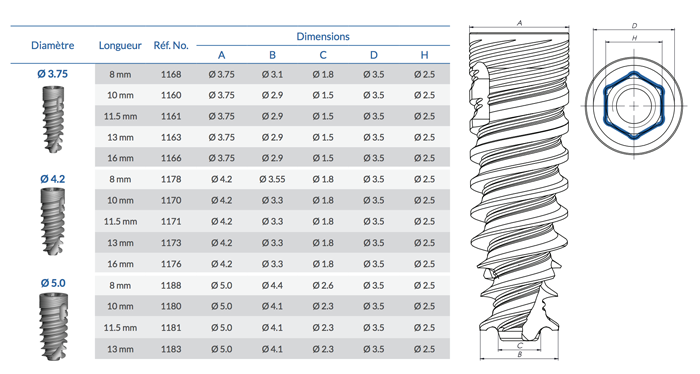
1;2;2;

1;3;2;

1;4;2;
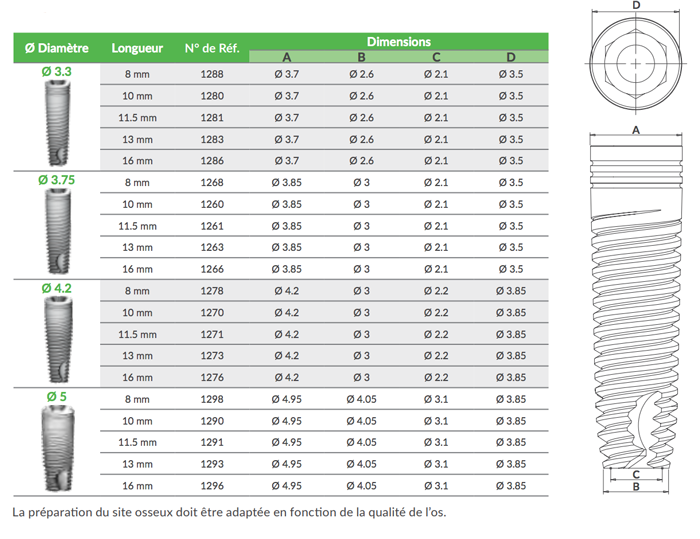
1;5;2;

1;6;2;
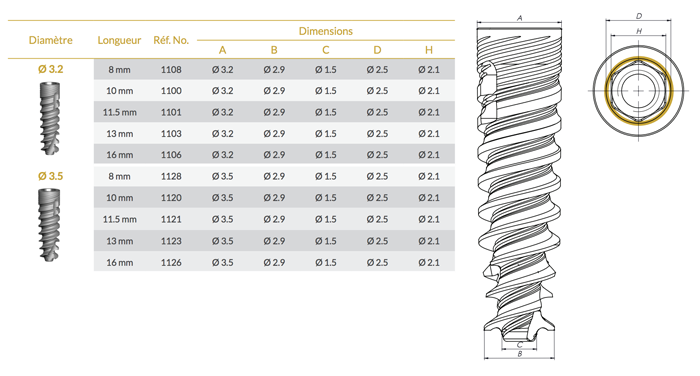
1;7;2;

1;10;2;
1;12;2;
1;14;2;

1;16;2;

1;17;2;

1;18;2;

1;19;2;

1;20;2;

1;22;2;

1;23;2;

1;24;2;

1;25;2;

1;28;2;

1;29;2;

1;30;2;

1;31;2;

1;33;2;

1;34;2;

1;35;2;

1;36;2;

1;37;2;

1;39;2;

1;40;2;

1;41;2;

1;42;2;

1;43;2;

1;44;2;

1;45;2;

1;46;2;

1;47;2;

1;48;2;

1;49;2;

1;50;2;

1;51;2;

1;52;2;

1;53;2;

1;54;2;

1;55;2;

1;56;2;

1;57;2;

1;58;2;

1;59;2;

1;60;2;

1;61;2;

1;62;2;

1;63;2;

1;64;2;

1;65;2;

1;66;2;

1;67;2;

1;68;2;

1;69;2;

1;70;2;

1;71;2;

1;72;2;

1;73;2;

1;74;2;

1;75;2;

1;76;2;

1;77;2;

1;78;2;

1;79;2;

1;80;2;

1;81;2;

1;82;2;

1;90;2;

1;91;2;

1;92;2;

1;93;2;

1;94;2;

1;106;2;

1;107;2;

1;108;2;

1;113;2;

1;114;2;

1;115;2;

1;116;2;

1;117;2;

1;118;2;

1;119;2;

1;120;2;

1;121;2;

1;122;2;

1;123;2;

1;124;2;

1;125;2;

1;126;2;

1;132;2;
1;133;2;
1;134;2;
1;171;2;

1;172;2;

1;173;2;

1;175;2;

2;1;2;
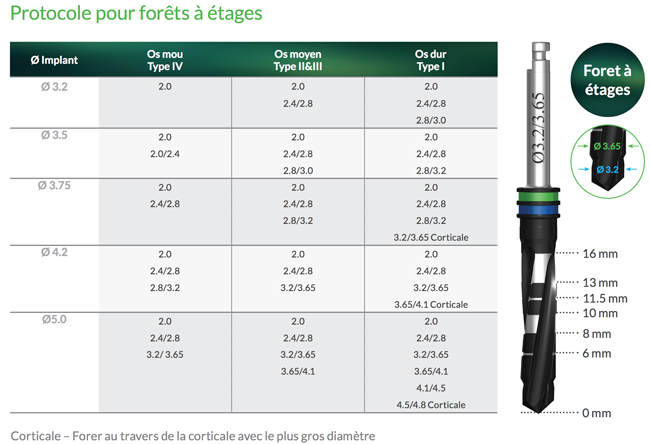
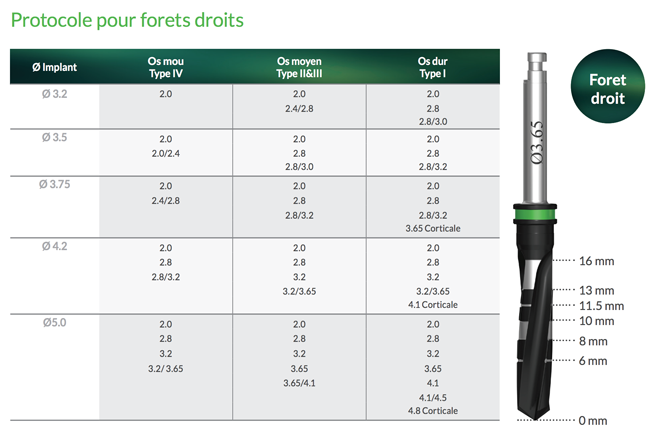
2;2;2;
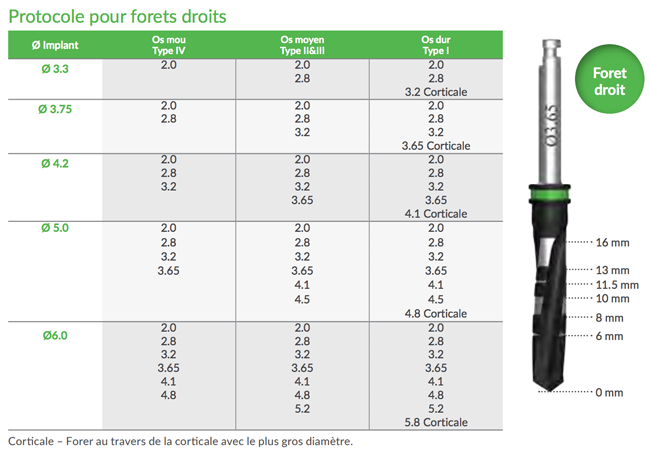
2;3;2;
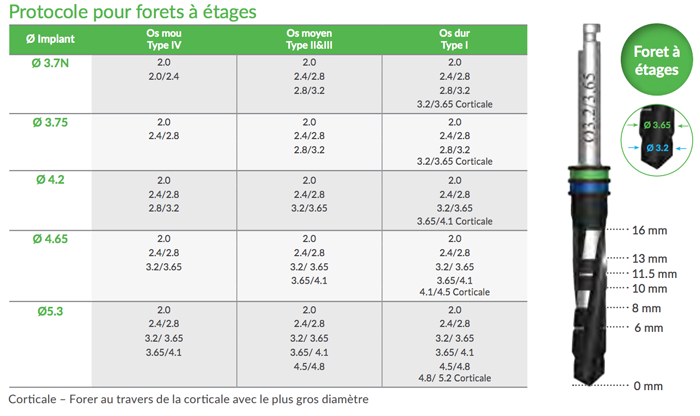

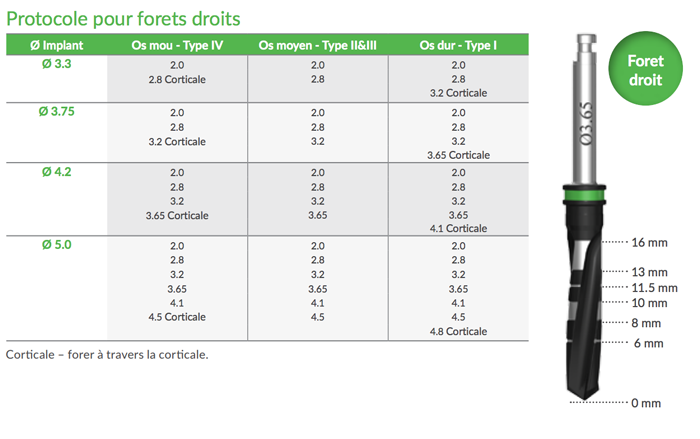
2;5;2;

2;6;2;
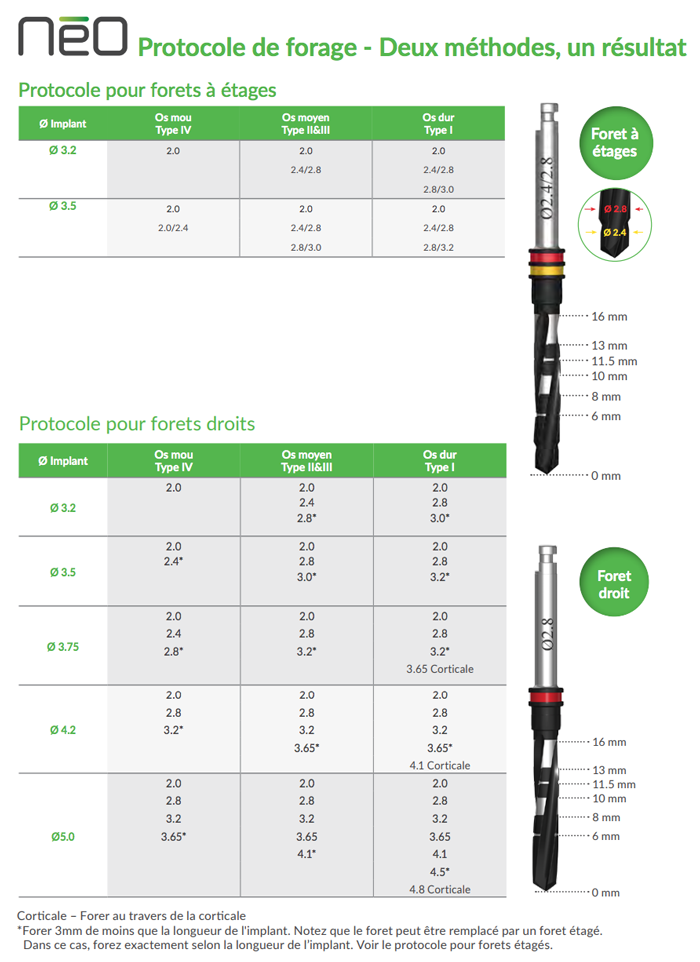
2;7;2;

3;183;2;
1. Quelle est l'origine des matériaux de Greffe Osseuse ?
AUTO-GREFFE :
Matériel de Greffe prélevé sur le propre corps du patient.
ALLO GREFFE :
Matériel de Greffe prélevé sur des humains
- Donneur vivant
- ou cadavre
XENO GREFFE :
Matériel de Greffe obtenu à partir d'une source animale plus généralement d'origine
- Bovine : bœuf
- Porcine : porc
- Equine : cheval
ALLO PLASTE :
Matériel de greffe d'origine synthétique comme le TCD Tri-calcium-Phosphate
Le matériel de greffe Alpha Bio Active appartient à la famille des XENO GREFFES
2. Quel est l'impact de la porosité des Granules sur la régénération osseuse ?
La porosité est définie par le rapport entre la taille de la granule et les espaces vides au sein de la granule et ceci est une propriété totalement indépendante du matériau quelle que soit son origine.
Ce paramètre, la porosité, est à l'origine de la néo-vascularisation sur le site à greffer
C'est un passage obligé dans la cascade de réactions aboutissant à la régénération osseuse.
3. Qu'est ce qu'un matériau de Greffe Passif ?
Le matériau de greffe dans ce cas de figure sert de trame à la régénération osseuse et à une action ostéoconductrice, ce qui permet d'entamer un processus de régénération au sein des sites déficients.
Cette trame fournit une structure idéale permettant une attache cellulaire et ainsi initie la régénération osseuse.
Les Xeno Greffes, Allo Greffes et Greffes Synthétiques sont des exemples de matériaux de Greffes Passifs.
4. Pourquoi appelons-nous notre matériau de Greffe "Bio-Actif" ?
Le matériau de Greffe "Alpha Bio Actif", Xenogreffe est baigné dans un ensemble de polymères et d'éléments nutritifs cellulaires qui permet au matériaux de majorer les propriétés ostéo-conductrices.
5. Que signifie OSTEO-CONDUCTION et OSTEO-INDUCTION ?
a - L'ostéo-conduction est le processus au cours duquel le matériau de greffe sert de support à la régénération osseuse.
Les ostéoblastes, présents à la marge du déficit osseux, comblé par le matériau de greffe, utilisent ce matériau comme une trame sur laquelle ils se multiplient et génèrent ainsi un nouvel os.
b - L'ostéo-conduction est le processus par lequel l'ostéo-génèse est induite
C'est un phénomène couramment observé au cours de la cicatrisation d'un os lésé.
L'ostéo-conduction nécessite le "Recrutement" de cellules immatures et la stimulation de ces cellules en pro-ostéoblastes.
Le matériau de greffe Alpha Bio majore la conduction grâce à son "immersion" avec des Poly-Lactic + Poly- ε-caprolactone, matériaux parfaitement connus et utilisés dans l'industrie pour la fabrication de matrice 3D avec introduction de cellules souches dans les tissus lésés.
6. Existe -t-il un intérêt à mixer, Greffe Bio-Active avec d'autres substituts osseux?
La Greffe Osseuse Bio-Active, à elle seule, permet d'excellents résultats en régénération osseuse.
Nous ne recommandons donc pas de mixer la Xeno greffe "Bio-Active" avec d'autres Xenogreffes ou à d'autres substituts d'os synthétiques.
7. Est-il indiqué de "mouiller" la Xenogreffe avec le sang du patient ou un sérum physiologique?
Effectivement pour utiliser le matériau de Greffe et pour en avoir une bonne préhension il est indiqué d'adjoindre à la Xenogreffe le sang du patient ou quelques gouttes de sérum physiologique.
8. A quel niveau de stérilisation est soumis le matériau de greffe Alpha Bio Actif?
La greffe Osseuse "Alpha Bio-Active" est soumise à des rayons beta pour atteindre de hauts niveaux de sécurité.
9. Quelles sont les différences notables entre les matériaux de greffes de faible granulométrie et les matériaux à granulométrie importante?
En règle générale les matériaux à faible granulométrie sont indiqués pour les déficits osseux de faible volume, alors que les matériaux à forte granulométrie sont indiqués pour des déficits osseux importants comme dans des interventions de "Sinus Lift" par exemple.
Un mix des granulométries peut être utilisé en fonction d'une situation clinique donnée et donc "moduler" ces indications basiques.
Alpha Bio Active est donc disponible en :
- GRANULOMETRIE faible 0.25 / 1mm
- GRANULOMETRIE forte 1 / 2mm
10. Existe-t-il une différence de résorption dans le temps entre Granulométrie faible et Granulométrie forte en d'autres termes la taille de la granule a-t-elle une incidence sur sa résorption?
La réponse est "NON" aucune incidence
3;184;2;
1. Quelle est l'origine des matériaux de Greffe Osseuse ?
AUTO-GREFFE :
Matériel de Greffe prélevé sur le propre corps du patient.
ALLO GREFFE :
Matériel de Greffe prélevé sur des humains
- Donneur vivant
- ou cadavre
XENO GREFFE :
Matériel de Greffe obtenu à partir d'une source animale plus généralement d'origine
- Bovine : bœuf
- Porcine : porc
- Equine : cheval
ALLO PLASTE :
Matériel de greffe d'origine synthétique comme le TCD Tri-calcium-Phosphate
Le matériel de greffe Alpha Bio Active appartient à la famille des XENO GREFFES
2. Quel est l'impact de la porosité des Granules sur la régénération osseuse ?
La porosité est définie par le rapport entre la taille de la granule et les espaces vides au sein de la granule et ceci est une propriété totalement indépendante du matériau quelle que soit son origine.
Ce paramètre, la porosité, est à l'origine de la néo-vascularisation sur le site à greffer
C'est un passage obligé dans la cascade de réactions aboutissant à la régénération osseuse.
3. Qu'est ce qu'un matériau de Greffe Passif ?
Le matériau de greffe dans ce cas de figure sert de trame à la régénération osseuse et à une action ostéoconductrice, ce qui permet d'entamer un processus de régénération au sein des sites déficients.
Cette trame fournit une structure idéale permettant une attache cellulaire et ainsi initie la régénération osseuse.
Les Xeno Greffes, Allo Greffes et Greffes Synthétiques sont des exemples de matériaux de Greffes Passifs.
4. Pourquoi appelons-nous notre matériau de Greffe "Bio-Actif" ?
Le matériau de Greffe "Alpha Bio Actif", Xenogreffe est baigné dans un ensemble de polymères et d'éléments nutritifs cellulaires qui permet au matériaux de majorer les propriétés ostéo-conductrices.
5. Que signifie OSTEO-CONDUCTION et OSTEO-INDUCTION ?
a - L'ostéo-conduction est le processus au cours duquel le matériau de greffe sert de support à la régénération osseuse.
Les ostéoblastes, présents à la marge du déficit osseux, comblé par le matériau de greffe, utilisent ce matériau comme une trame sur laquelle ils se multiplient et génèrent ainsi un nouvel os.
b - L'ostéo-conduction est le processus par lequel l'ostéo-génèse est induite
C'est un phénomène couramment observé au cours de la cicatrisation d'un os lésé.
L'ostéo-conduction nécessite le "Recrutement" de cellules immatures et la stimulation de ces cellules en pro-ostéoblastes.
Le matériau de greffe Alpha Bio majore la conduction grâce à son "immersion" avec des Poly-Lactic + Poly- ε-caprolactone, matériaux parfaitement connus et utilisés dans l'industrie pour la fabrication de matrice 3D avec introduction de cellules souches dans les tissus lésés.
6. Existe -t-il un intérêt à mixer, Greffe Bio-Active avec d'autres substituts osseux?
La Greffe Osseuse Bio-Active, à elle seule, permet d'excellents résultats en régénération osseuse.
Nous ne recommandons donc pas de mixer la Xeno greffe "Bio-Active" avec d'autres Xenogreffes ou à d'autres substituts d'os synthétiques.
7. Est-il indiqué de "mouiller" la Xenogreffe avec le sang du patient ou un sérum physiologique?
Effectivement pour utiliser le matériau de Greffe et pour en avoir une bonne préhension il est indiqué d'adjoindre à la Xenogreffe le sang du patient ou quelques gouttes de sérum physiologique.
8. A quel niveau de stérilisation est soumis le matériau de greffe Alpha Bio Actif?
La greffe Osseuse "Alpha Bio-Active" est soumise à des rayons beta pour atteindre de hauts niveaux de sécurité.
9. Quelles sont les différences notables entre les matériaux de greffes de faible granulométrie et les matériaux à granulométrie importante?
En règle générale les matériaux à faible granulométrie sont indiqués pour les déficits osseux de faible volume, alors que les matériaux à forte granulométrie sont indiqués pour des déficits osseux importants comme dans des interventions de "Sinus Lift" par exemple.
Un mix des granulométries peut être utilisé en fonction d'une situation clinique donnée et donc "moduler" ces indications basiques.
Alpha Bio Active est donc disponible en :
- GRANULOMETRIE faible 0.25 / 1mm
- GRANULOMETRIE forte 1 / 2mm
10. Existe-t-il une différence de résorption dans le temps entre Granulométrie faible et Granulométrie forte en d'autres termes la taille de la granule a-t-elle une incidence sur sa résorption?
La réponse est "NON" aucune incidence
3;185;2;
1. Quelle est l'origine des matériaux de Greffe Osseuse ?
AUTO-GREFFE :
Matériel de Greffe prélevé sur le propre corps du patient.
ALLO GREFFE :
Matériel de Greffe prélevé sur des humains
- Donneur vivant
- ou cadavre
XENO GREFFE :
Matériel de Greffe obtenu à partir d'une source animale plus généralement d'origine
- Bovine : bœuf
- Porcine : porc
- Equine : cheval
ALLO PLASTE :
Matériel de greffe d'origine synthétique comme le TCD Tri-calcium-Phosphate
Le matériel de greffe Alpha Bio Active appartient à la famille des XENO GREFFES
2. Quel est l'impact de la porosité des Granules sur la régénération osseuse ?
La porosité est définie par le rapport entre la taille de la granule et les espaces vides au sein de la granule et ceci est une propriété totalement indépendante du matériau quelle que soit son origine.
Ce paramètre, la porosité, est à l'origine de la néo-vascularisation sur le site à greffer
C'est un passage obligé dans la cascade de réactions aboutissant à la régénération osseuse.
3. Qu'est ce qu'un matériau de Greffe Passif ?
Le matériau de greffe dans ce cas de figure sert de trame à la régénération osseuse et à une action ostéoconductrice, ce qui permet d'entamer un processus de régénération au sein des sites déficients.
Cette trame fournit une structure idéale permettant une attache cellulaire et ainsi initie la régénération osseuse.
Les Xeno Greffes, Allo Greffes et Greffes Synthétiques sont des exemples de matériaux de Greffes Passifs.
4. Pourquoi appelons-nous notre matériau de Greffe "Bio-Actif" ?
Le matériau de Greffe "Alpha Bio Actif", Xenogreffe est baigné dans un ensemble de polymères et d'éléments nutritifs cellulaires qui permet au matériaux de majorer les propriétés ostéo-conductrices.
5. Que signifie OSTEO-CONDUCTION et OSTEO-INDUCTION ?
a - L'ostéo-conduction est le processus au cours duquel le matériau de greffe sert de support à la régénération osseuse.
Les ostéoblastes, présents à la marge du déficit osseux, comblé par le matériau de greffe, utilisent ce matériau comme une trame sur laquelle ils se multiplient et génèrent ainsi un nouvel os.
b - L'ostéo-conduction est le processus par lequel l'ostéo-génèse est induite
C'est un phénomène couramment observé au cours de la cicatrisation d'un os lésé.
L'ostéo-conduction nécessite le "Recrutement" de cellules immatures et la stimulation de ces cellules en pro-ostéoblastes.
Le matériau de greffe Alpha Bio majore la conduction grâce à son "immersion" avec des Poly-Lactic + Poly- ε-caprolactone, matériaux parfaitement connus et utilisés dans l'industrie pour la fabrication de matrice 3D avec introduction de cellules souches dans les tissus lésés.
6. Existe -t-il un intérêt à mixer, Greffe Bio-Active avec d'autres substituts osseux?
La Greffe Osseuse Bio-Active, à elle seule, permet d'excellents résultats en régénération osseuse.
Nous ne recommandons donc pas de mixer la Xeno greffe "Bio-Active" avec d'autres Xenogreffes ou à d'autres substituts d'os synthétiques.
7. Est-il indiqué de "mouiller" la Xenogreffe avec le sang du patient ou un sérum physiologique?
Effectivement pour utiliser le matériau de Greffe et pour en avoir une bonne préhension il est indiqué d'adjoindre à la Xenogreffe le sang du patient ou quelques gouttes de sérum physiologique.
8. A quel niveau de stérilisation est soumis le matériau de greffe Alpha Bio Actif?
La greffe Osseuse "Alpha Bio-Active" est soumise à des rayons beta pour atteindre de hauts niveaux de sécurité.
9. Quelles sont les différences notables entre les matériaux de greffes de faible granulométrie et les matériaux à granulométrie importante?
En règle générale les matériaux à faible granulométrie sont indiqués pour les déficits osseux de faible volume, alors que les matériaux à forte granulométrie sont indiqués pour des déficits osseux importants comme dans des interventions de "Sinus Lift" par exemple.
Un mix des granulométries peut être utilisé en fonction d'une situation clinique donnée et donc "moduler" ces indications basiques.
Alpha Bio Active est donc disponible en :
- GRANULOMETRIE faible 0.25 / 1mm
- GRANULOMETRIE forte 1 / 2mm
10. Existe-t-il une différence de résorption dans le temps entre Granulométrie faible et Granulométrie forte en d'autres termes la taille de la granule a-t-elle une incidence sur sa résorption?
La réponse est "NON" aucune incidence
3;186;2;"
1. Quelle est l'origine des matériaux de Greffe Osseuse ?
AUTO-GREFFE :
Matériel de Greffe prélevé sur le propre corps du patient.
ALLO GREFFE :
Matériel de Greffe prélevé sur des humains
- Donneur vivant
- ou cadavre
XENO GREFFE :
Matériel de Greffe obtenu à partir d'une source animale plus généralement d'origine
- Bovine : bœuf
- Porcine : porc
- Equine : cheval
ALLO PLASTE :
Matériel de greffe d'origine synthétique comme le TCD Tri-calcium-Phosphate
Le matériel de greffe Alpha Bio Active appartient à la famille des XENO GREFFES
2. Quel est l'impact de la porosité des Granules sur la régénération osseuse ?
La porosité est définie par le rapport entre la taille de la granule et les espaces vides au sein de la granule et ceci est une propriété totalement indépendante du matériau quelle que soit son origine.
Ce paramètre, la porosité, est à l'origine de la néo-vascularisation sur le site à greffer
C'est un passage obligé dans la cascade de réactions aboutissant à la régénération osseuse.
3. Qu'est ce qu'un matériau de Greffe Passif ?
Le matériau de greffe dans ce cas de figure sert de trame à la régénération osseuse et à une action ostéoconductrice, ce qui permet d'entamer un processus de régénération au sein des sites déficients.
Cette trame fournit une structure idéale permettant une attache cellulaire et ainsi initie la régénération osseuse.
Les Xeno Greffes, Allo Greffes et Greffes Synthétiques sont des exemples de matériaux de Greffes Passifs.
4. Pourquoi appelons-nous notre matériau de Greffe "Bio-Actif" ?
Le matériau de Greffe "Alpha Bio Actif", Xenogreffe est baigné dans un ensemble de polymères et d'éléments nutritifs cellulaires qui permet au matériaux de majorer les propriétés ostéo-conductrices.
5. Que signifie OSTEO-CONDUCTION et OSTEO-INDUCTION ?
a - L'ostéo-conduction est le processus au cours duquel le matériau de greffe sert de support à la régénération osseuse.
Les ostéoblastes, présents à la marge du déficit osseux, comblé par le matériau de greffe, utilisent ce matériau comme une trame sur laquelle ils se multiplient et génèrent ainsi un nouvel os.
b - L'ostéo-conduction est le processus par lequel l'ostéo-génèse est induite
C'est un phénomène couramment observé au cours de la cicatrisation d'un os lésé.
L'ostéo-conduction nécessite le "Recrutement" de cellules immatures et la stimulation de ces cellules en pro-ostéoblastes.
Le matériau de greffe Alpha Bio majore la conduction grâce à son "immersion" avec des Poly-Lactic + Poly- ε-caprolactone, matériaux parfaitement connus et utilisés dans l'industrie pour la fabrication de matrice 3D avec introduction de cellules souches dans les tissus lésés.
6. Existe -t-il un intérêt à mixer, Greffe Bio-Active avec d'autres substituts osseux?
La Greffe Osseuse Bio-Active, à elle seule, permet d'excellents résultats en régénération osseuse.
Nous ne recommandons donc pas de mixer la Xeno greffe "Bio-Active" avec d'autres Xenogreffes ou à d'autres substituts d'os synthétiques.
7. Est-il indiqué de "mouiller" la Xenogreffe avec le sang du patient ou un sérum physiologique?
Effectivement pour utiliser le matériau de Greffe et pour en avoir une bonne préhension il est indiqué d'adjoindre à la Xenogreffe le sang du patient ou quelques gouttes de sérum physiologique.
8. A quel niveau de stérilisation est soumis le matériau de greffe Alpha Bio Actif?
La greffe Osseuse "Alpha Bio-Active" est soumise à des rayons beta pour atteindre de hauts niveaux de sécurité.
9. Quelles sont les différences notables entre les matériaux de greffes de faible granulométrie et les matériaux à granulométrie importante?
En règle générale les matériaux à faible granulométrie sont indiqués pour les déficits osseux de faible volume, alors que les matériaux à forte granulométrie sont indiqués pour des déficits osseux importants comme dans des interventions de "Sinus Lift" par exemple.
Un mix des granulométries peut être utilisé en fonction d'une situation clinique donnée et donc "moduler" ces indications basiques.
Alpha Bio Active est donc disponible en :
- GRANULOMETRIE faible 0.25 / 1mm
- GRANULOMETRIE forte 1 / 2mm
10. Existe-t-il une différence de résorption dans le temps entre Granulométrie faible et Granulométrie forte en d'autres termes la taille de la granule a-t-elle une incidence sur sa résorption?
La réponse est "NON" aucune incidence
"




